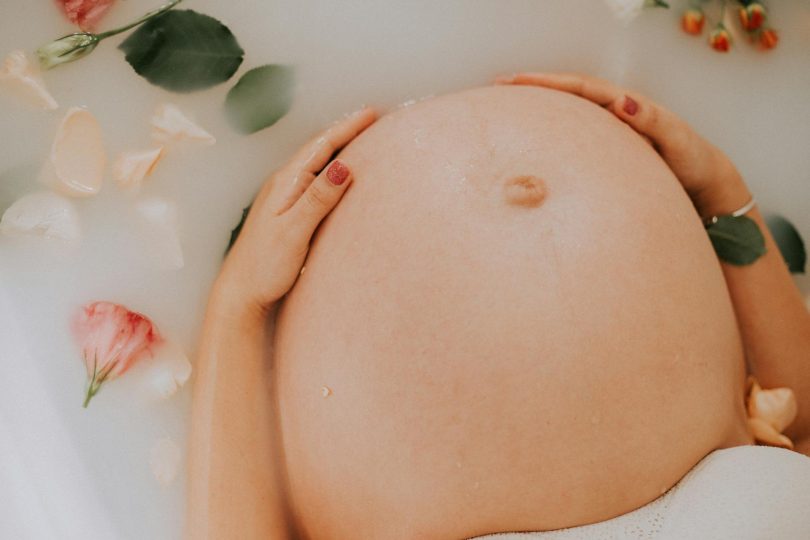The Life-Changing Secret to a Calm & Empowering Birth
If you are pregnant, investing in a Hypnobirthing course could be one of the best decisions you ever make for yourself, your baby and your birth experience.
Here’s why! Hypnobirthing is about creating a positive mindset for birth, which is so important.
The mind body connection is huge & the role that this plays during labour is massive.
Hypnobirthing is not about hypnosis in the sense of feeling out of control. It is about training the mind and body to work together, to improve the chances of having a positive birth experience.

During labour there are many hormones that all work together to help you birth your baby. There are 3 major hormones that play a big role during birth though and these are:
Oxytocin – The love hormone, the shy hormone and the hormone that is responsible for getting labour started, progressing and progressing well.
Endorphins – The body’s natural pain relief. Endorphins are produced when the body creates oxytocin during labour and are said to be 200 times stronger than morphine. The more oxytocin the body produces, the more endorphins that are created. One thing to note though… endorphins increase as labour progresses, allowing the body to deal with those stronger, more intense surges later on in labour. However, the body does not create the same amount of endorphins to deal with the discomfort of labour, when labour is started artificially, i.e. when a woman’s labour is induced, this includes a stretch and sweep. This is often why induced births require stronger pain relief, such as an epidural.
Adrenaline – This is the hormone that is produced when the body is scared and frightened. This is the flight-fight-freeze response. Adrenaline is not the hormone that we want to produce during labour, because it slows labour down, makes it more uncomfortable and when adrenaline goes up, oxytocin and endorphins come down and vice versa.
Unfortunately during labour, many women do become scared and frightened. This is because they might be experiencing something that they’ve never experienced before and naturally, we become scared and unsure of the unknown. Also, they might have heard or read lots of negative things about labour and birth and these negative thoughts sit in the unconscious mind. This is not going to make you feel calm and relaxed during labour and help oxytocin and endorphins to flow in abundance.

The success of a quick and comfortable labour, is to feel calm. When we feel calm, we feel relaxed and when we feel relaxed, we feel comfortable. With relaxed muscles, those contractions can work much better and feel much more manageable than when they are tense. However, when we feel scared, we feel tense and we are tense, we feel pain and when we feel pain, we feel scared. This is known as the fear-tension-pain cycle. To manage the fear of childbirth, this is where those hypnobirthing tools and techniques really come in useful.
Hypnobirthing helps people to reframe birth & see it more as a natural, & positive experience.
It uses relaxation techniques, self-hypnosis and calm breathing to replace fear with confidence and calm. This helps the body to produce lots more oxytocin and endorphins and reduce any adrenaline in the body. People who practice Hypnobirthing during pregnancy, report experiencing less interventions, less pain and a more positive experience during labour and birth. Many also report having a better postpartum recovery period too. This is because a calm, positive birth experience makes women feel empowered, bond with their baby better and this reduces anxiety and depression post birth.

Hypnobirthing is suitable for all births, including birth partners. The tools and techniques that birth partners can learn on a Hypnobirthing course can give them knowledge and confidence to be a great advocate during labour, if required. They will also learn practical tools to help them to support their partner during labour, such as massage techniques, breathing cues and positive affirmations. Instead of feeling lost and unsure on how to support during labour, they can become a calm and confident birth partner. Good, supportive birth partners are such an important part of the labour process.
Hypnobirthing is on the rise amongst pregnant families, seeing a 500% increase over the last five or so years. A study found that just 2% of those who had their baby pre-2020 used hypnobirthing tools and techniques during their labour and this has increased to 12% amongst those who have given birth more recently (Lumley, S., 2024).

There is often a misconception that Hypnobirthing is only for a certain type of birth, but actually hypnobirthing is for all births, including caesarean sections. Hypnobirthing tools and techniques can be applied to vaginal births, induced births, water births, home births, hospital births and births involving an epidural.
If you’d like to feel less anxious about your birth and feel more excited, then check out the Hypnobirthing courses that I offer. My Hypnobirthing courses are private 1-1 courses and can take place either face to face or online. I can help you to increase your chances of having a positive birth experience, where you feel calm, confident and in control.
Main – Photo by lucas mendes



